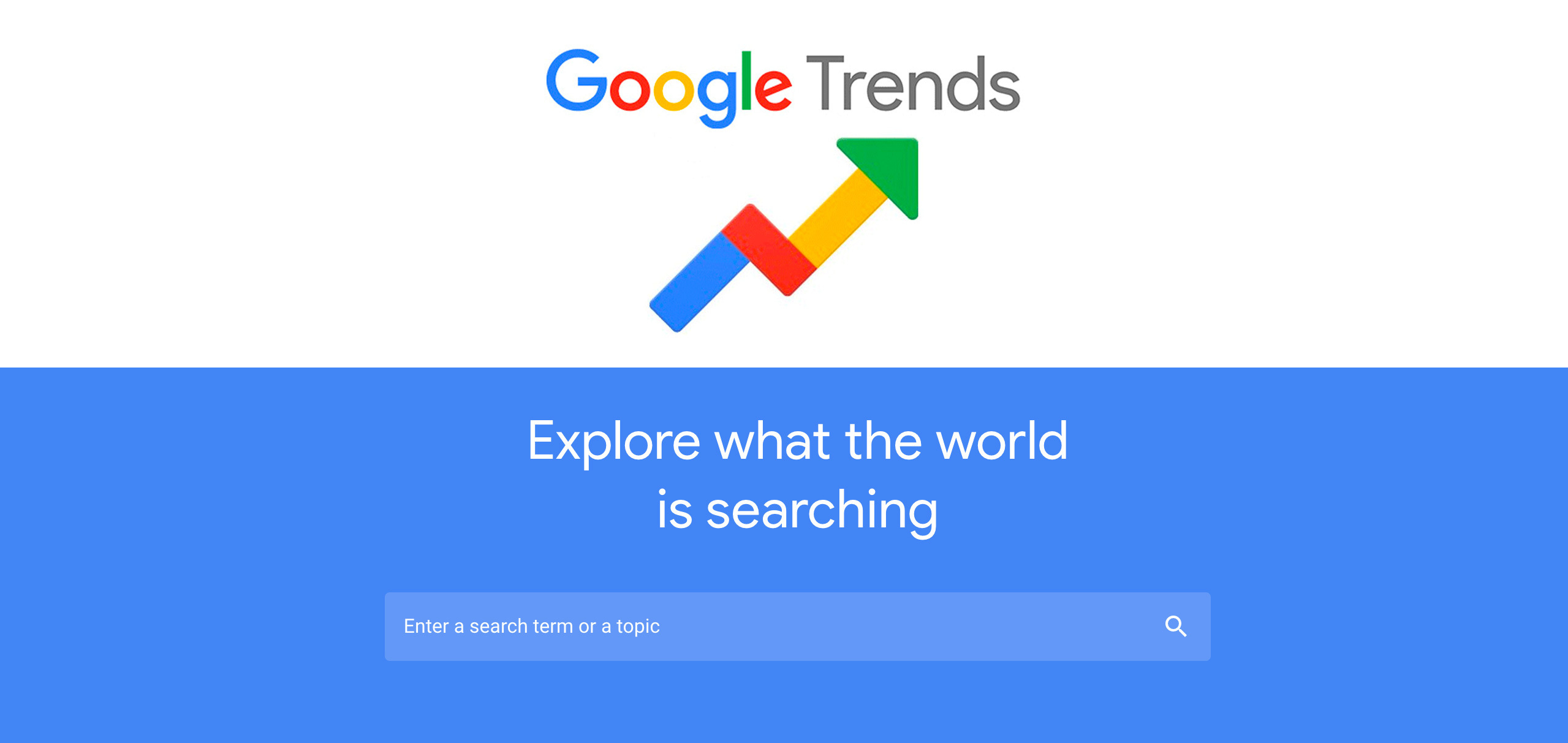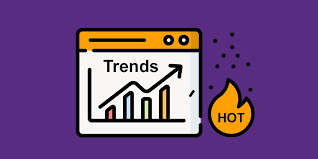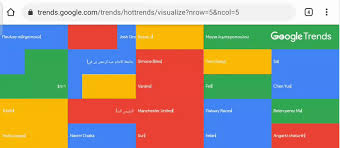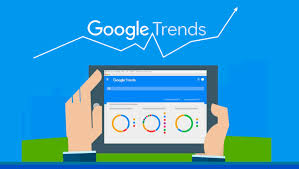Hello!
If you’re working as a digital marketing professional, chances are you’ve used Google Trends more than once. Therefore, you are aware that it is a crafty instrument that provides you with powerful content insights.
 And because Google Trends is one of the best tools on the market for content optimization and content research, we’re going over the ABCs.
And because Google Trends is one of the best tools on the market for content optimization and content research, we’re going over the ABCs.
In this article, we’re sharing 21 ways of using Google Trends to build your content marketing strategy. Plus, we will introduce you to the most essential features and give you tips on how to utilize the data.
Google Trends allows you to follow the rise and fall of topic interest in real-time and thus plan accordingly.
1. Keyword Traffic
 Because Google Trends is an official Google tool, the data is very trustworthy. However, it’s not very precise, which means you can’t get the exact amount of traffic. But, you can get a visual representation (or comparison) of the traffic volume.
Because Google Trends is an official Google tool, the data is very trustworthy. However, it’s not very precise, which means you can’t get the exact amount of traffic. But, you can get a visual representation (or comparison) of the traffic volume.
We suggest you compare the targeted keyword with a keyword you rank for to pinpoint the traffic volume. If you know the traffic volume of one keyword, you can use it to determine the traffic volume for other keywords by comparing them.
By creating your content strategy with Google keyword trends, it will help you get momentum: the secret hack to success!
2. Content Plan
Google Trends allows you to examine keyword data over long and short periods. You can get data for the last five years and see if you have an upward trend on your hands. Hence, you should focus your content efforts on this topic, and mark it in your content plan.
However, if you see that a topic (keyword) is losing the audience, then you should avoid it because the content consumption is changing.
3. Short View Insights
Short View is the perfect feature for content marketing because it provides you with detailed data for a short period. Hence, you can gain valuable insights and plan accordingly.
For example, in a 30 or 90 day period, you can see on which day people are performing searches and publish your content (or ad) on that day.
4. Publishing Schedule
 In digital marketing, we’re all data-driven. And with Google Trends, you can stop “predicting” dates for your publishing schedule and organize it according to the available data. With Google Trends, you can design a custom-tailored publishing schedule for each topic you want to cover.
In digital marketing, we’re all data-driven. And with Google Trends, you can stop “predicting” dates for your publishing schedule and organize it according to the available data. With Google Trends, you can design a custom-tailored publishing schedule for each topic you want to cover.
You get access to data that shows you which day of the week engagement and interest peak, and at what time you should publish your content. That gives you time to prepare and organize, and more importantly, get a bigger audience.
5. Keyword Categories
Grouping keywords and sorting them in categories is another Google Trends feature you should learn how to utilize. Just pick your niche/category before you run the analysis. If you’re dealing with keywords that are used across different niches, narrowing the search span of the algorithm is vital. You need to gather the proper information to make a decision, and that’s why the categories function is essential.
6. Geography Data
 Local SEO’s have been using geography data to optimize their content and outreach with considerable success for the past couple of years. And now, you can do the same with Google Trends.
Local SEO’s have been using geography data to optimize their content and outreach with considerable success for the past couple of years. And now, you can do the same with Google Trends.
Trends don’t happen only on a vast scale, and what’s popular in New York, might not be in Los Angeles. Furthermore, the search terms that people are using for the same service can change with their location. In some parts of America, people use the term rent, and in others, they use the term lease.
Hence, you should tailor your content according to your audience.
7. Topic Clusters
If you create only one article per topic, you will run out of articles to write in a short time. That’s why you need to start creating topic clusters that allow you to derive multiple titles from only one topic. Google Trends can help you identify them.
8. Related Queries
The related queries function can help you create topic clusters, and at the same time, it will reveal to you what’s popular in your niche. This function gives you the option to create a long-form content piece in the form of a skyscraper, or to create several articles covering different aspects of the same topic.
9. Rising Queries
 Another smart way to use the related queries is to set the function to rising, which allows you to catch a topic before the competition becomes too fierce.
Another smart way to use the related queries is to set the function to rising, which allows you to catch a topic before the competition becomes too fierce.
You are gaining tremendously valuable insight into how a keyword evolves and grows in popularity. And once you know that there’s a new trend on the horizon, you can use the momentum to gain new users and more traffic through content creation.
10. Synonyms
Content writers use synonyms all the time in order to create captivating articles. However, there is more than one benefit to using synonyms, like gaining more organic traffic. And you can use Google Trends to find the most popular synonyms for your keyword.
By combining synonyms, you’re actually creating content that’s ranking for different keywords, even though they might carry the same meaning. Hence, the volume of those different keywords is also combined.
11. Seasonal Patterns
 People’s shopping patterns change during the holidays, seasons, or other significant events. Just think about how many gifts people buy during Christmas or Thanksgiving. Hence, there’s a window of opportunity for content marketers to influence customers. And that’s called seasonal marketing.
People’s shopping patterns change during the holidays, seasons, or other significant events. Just think about how many gifts people buy during Christmas or Thanksgiving. Hence, there’s a window of opportunity for content marketers to influence customers. And that’s called seasonal marketing.
Google Trends can help you see which topics, keywords, or products are gaining traction for the upcoming season. You can learn how to read the patterns in the data!
12. Social Media Hashtags
 Instagram posts and TikTok videos are also content. In fact, these formats allow digital marketers to package brand messages in a more effective and shareable way. Thus, you’ll be able to reach a wider audience and get them engaged on your platform.
Instagram posts and TikTok videos are also content. In fact, these formats allow digital marketers to package brand messages in a more effective and shareable way. Thus, you’ll be able to reach a wider audience and get them engaged on your platform.
And Google Trends can help you identify trending and upcoming social media hashtags. Search for popular topics connected to your top products and services, and find an innovative and creative way to utilize the power of hashtags.
13. Real-Time Data
Google Trends is an excellent tool for content because it allows you to base your decisions on real-time data. Just like Google Analytics enables you to track and analyze your audience in real-time, Google Trends does the same for upcoming trends. And that’s an incredible advantage because it gives you insight into customer patterns. Once you understand what your customer base is searching for, you’ll be able to create the content that answers their questions.
14. Dips in Traffic
 SEO’s tend to monitor traffic daily, and you should do the same if you want to stay ahead of the curve. However, sometimes, dips in traffic happen, and identifying what caused them can be crucial. You can use Google Trends to figure out if the dips are “natural” and they happened because a portion of your content is no longer trending, or because there is another problem with the website.
SEO’s tend to monitor traffic daily, and you should do the same if you want to stay ahead of the curve. However, sometimes, dips in traffic happen, and identifying what caused them can be crucial. You can use Google Trends to figure out if the dips are “natural” and they happened because a portion of your content is no longer trending, or because there is another problem with the website.
15. Niche Finder
If you haven’t found your niche yet, or if you want to branch out, you can use Google Trends to find the next popular niche.
It’s a simple analysis. Change the range from the last 12 months to 2004 till present and watch how the trends shift. You should also use the compare function if you’re considering more than one niche. However, before you decide, analyze the trends in more depth, and see if there’s room for additional growth, or the niche has reached its peak.
16. Content Freshness
Content freshness is a popular method for boosting organic traffic and reusing your old content. Hence, you can monitor a specific topic in Google Trends, and if you already covered it, change the content by adding new details. However, you will need to time the change to correspond to the growing trend.
17. Brand Awareness
 Smart brand strategy and awareness is more important than ever because consumers today are not interacting only with your products, but with your brand directly. They want to know if your company donates to charities, or if you support a cause, they approve of. That is what shapes their opinion of your business. And if you want to know if you’re going in the right direction, you should see how your brand is doing on Google Trends.
Smart brand strategy and awareness is more important than ever because consumers today are not interacting only with your products, but with your brand directly. They want to know if your company donates to charities, or if you support a cause, they approve of. That is what shapes their opinion of your business. And if you want to know if you’re going in the right direction, you should see how your brand is doing on Google Trends.
18. Competitor Monitoring
While you’re monitoring your company, you should also monitor your competitors and see if they’re doing something right. Analyze the topics they’re covering and create better content for your own website.
19. YouTube
As we said above, video is becoming the favorite content format in 2020. And you can use Google Trends to find interesting topics to cover on your YouTube channel. You can select the YouTube search option and locate topics that are specifically for video.
20. Ad Copy
Google Trends allows you to identify popular keywords. However, you don’t have to use them only for classic content creation, you can also use them to write a better ad copy and focus on the right keyword auction. If you’re working inside a limited budget, Google Trends can help you plan your PPC budget in advance, and save some money. You can target PPC campaigns only when you know they’ll be effective.
21. Inspiration
 Last but not least, you can use Google Trends for content inspiration. If you’re stuck and out of ideas, Google Trends can point you in the right direction by showing you the next big topic trend and growth hacking for your future content marketing strategy.
Last but not least, you can use Google Trends for content inspiration. If you’re stuck and out of ideas, Google Trends can point you in the right direction by showing you the next big topic trend and growth hacking for your future content marketing strategy.
Also read:
- 6 Key Focus Areas For Businesses Planning Cloud Migration
- Why Business Analysts Are Important Assets for CTOs
- How to Relax with Health Benefits
Takeaways in Using Google Trends for Content Marketing
By leveraging Google Trends, business owners and marketers can write the "perfect" content brief. Now that you know what Google Trends can do; it's high time to utilize this nifty tool to help you plan, develop, and execute your content marketing. Maximize how it analyzes the level of popularity of top search queries in Google Search across various regions and languages. And just as its purpose is for analyzing dynamic data, so should you be vigilant in checking back from time to time since trends naturally change constantly. What might be trendy now may not be trendy in the next few weeks (or months). That said, we hope this article inspires you to dive into Google Trends. Start analyzing more data so you can start planning your next content masterpiece.
As you could see, Google Trends is an awesome tool for your business. Fortunately, Google has so many tools you may use for business purposes. For instance, you can find at least 11 ways to use Google Workspace to boost your content marketing strategy.
Thank you!
Subscribe to our newsletter! Join us on social networks!
See you!






